In 1857, Abraham Lincoln was the lawyer in a case for the Rock Island Bridge Company. The company had built one of the first railroad bridges across the Mississippi River. When a ship crashed into the bridge, the ship owner sued the company, claiming that the bridge obstructed free navigation of the river. The case was dismissed after the jury was deadlocked, but during it, Lincoln made an argument for the national support of “rail travel from East to West.”

The nation needed a reliable method to connect its two coasts. The addition of the Oregon Territory in 1846 and the Mexican Cession in 1848 had given the United States control of the West Coast. In the decade that followed, discoveries of gold in California and silver in Nevada attracted large numbers of miners and settlers to the West.
Lincoln had grown up on the frontier, and he had traveled as a lawyer—by horseback—in the Midwest. He knew how difficult it was to get around. He believed that a transcontinental railroad would provide that much-needed physical link, but it raised other questions: What route should it follow? Where should the eastern terminus be? Could private companies manage such a massive undertaking? And what role, if any, should the federal government play?
After winning election as president in 1860, Lincoln took the first step to provide answers to some of those questions. He signed the Pacific Railway Act on July 1, 1862. It established the federal government’s support for a transcontinental railroad along a north-central route close to the 42nd parallel. The act called for building a telegraph line parallel to the railroad line. The government reserved the right to use both lines for national purposes, such as to deliver news, to carry mail, and to transport the military. It invested the president with the authority to determine where the eastern leg would begin. Lincoln named Council Bluffs, Iowa, but construction began across the Missouri River in Omaha, Nebraska. Lincoln also decided that the railroad’s standard gauge, or width between the two rails, would be four feet eight and a half inches.
Esta historia es de la edición February 2017 de Cobblestone American History Magazine for Kids.
Comience su prueba gratuita de Magzter GOLD de 7 días para acceder a miles de historias premium seleccionadas y a más de 9,000 revistas y periódicos.
Ya eres suscriptor ? Conectar
Esta historia es de la edición February 2017 de Cobblestone American History Magazine for Kids.
Comience su prueba gratuita de Magzter GOLD de 7 días para acceder a miles de historias premium seleccionadas y a más de 9,000 revistas y periódicos.
Ya eres suscriptor? Conectar
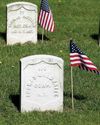
Putting the Pieces Together
Americans needed to begin to put the past behind them, come together, and plan for the future in the spring of 1865. But Abraham Lincoln, the man best equipped to lead them and who had hoped to restore the country as smoothly and peacefully as possible, had been assassinated.
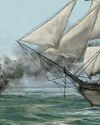
LAST SHOTS
The last Confederate forces in the Civil War didn’t surrender in the spring of 1865 or on a battlefield.
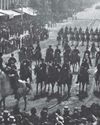
AND IN OTHER 1865 NEWS
A group of African Americans stop at the White House’s annual public reception on January 1, where they shake hands with President Abraham Lincoln.
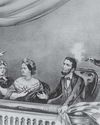
A Plot to Kill President the
For several months, actor John Wilkes Booth’s band of conspirators had plotted to capture President Abraham Lincoln and hold him hostage in exchange for Confederate prisoners.
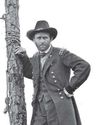
Let the Thing Be Pressed
In June 1864, Union Lieutenant General Ulysses S. Grant began a nearly 10-month campaign in Virginia.
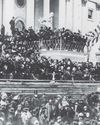
HEALING THE NATION
President Abraham Lincoln took the oath of office for the second time on March 4, 1865.

A Helping Hand
The spring season is hard in any agricultural society. Plants and animals are too small to eat.
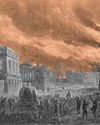
WAR SHERMAN-STYLE
As far as Union Major General William T. Sherman was concerned, the Civil War had gone on long enough.
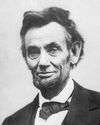
PEACE TALKS
The fall of Fort Fisher made clear that the Confederacy’s days were numbered. Southerners were tired and hungry.
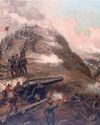
FORT FISHER'S FALL
Outnumbered Confederate soldiers inside Fort Fisher were unable to withstand the approach of Union troops by land and the constant Union naval bombardment from the sea.